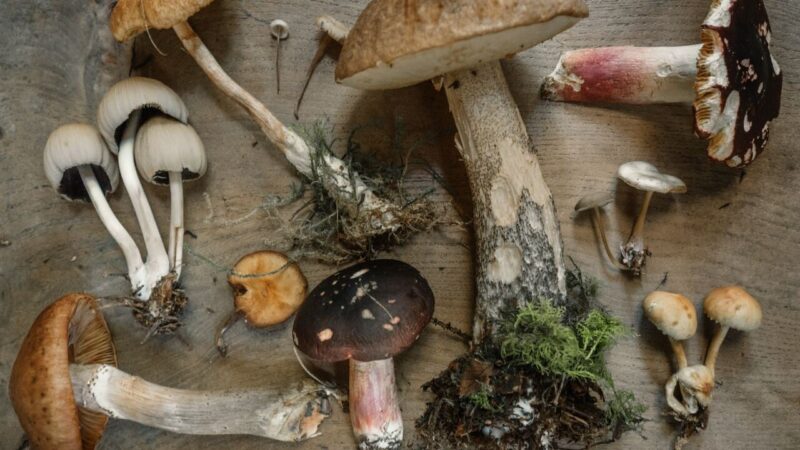The debate about whether mushrooms can be eaten raw is ongoing. While some say it is safe to consume certain raw mushroom species, most mushrooms should be cooked before eating. Cooking mushrooms makes their nutrients accessible and makes them easier to digest. Additionally, some varieties of mushrooms may be toxic when consumed raw. It is important to understand the risks and benefits of eating raw mushrooms.
Key Takeaways:
- Most mushrooms should be cooked before consumption for safety and digestibility.
- Raw mushrooms may not provide the full nutritional benefits attributed to cooked mushrooms.
- Some mushroom species are safe to eat raw in small quantities, but research is recommended.
- Certain mushrooms should never be eaten raw due to potential gastrointestinal issues or toxins.
- While raw mushrooms can be enjoyed in certain culinary experiences, they should be seen as a culinary experience rather than a nutritional one.
The Digestibility and Nutritional Value of Raw Mushrooms
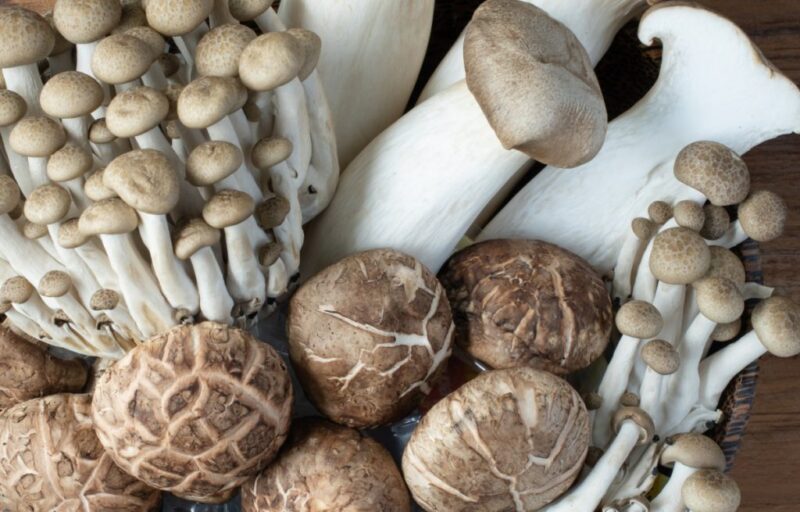
When it comes to raw mushrooms, there are a few important factors to consider: their digestibility and nutritional value. Most mushrooms are not easily digested when eaten raw due to the presence of chitin in their cell walls. Chitin is a tough compound that can be difficult for our digestive systems to break down. Cooking mushrooms, on the other hand, breaks down the chitin and makes them more digestible.
While cooking mushrooms improves their digestibility, it also enhances their nutritional value. Cooking mushrooms releases and activates their nutritional and medicinal components, making them more readily available for our bodies to absorb and utilize. In fact, some studies have shown that cooked mushrooms have higher antioxidant activity and greater concentrations of certain nutrients compared to their raw counterparts. Therefore, if you’re looking to maximize the nutritional benefits of mushrooms, it is recommended to cook them.
However, there are a few mushroom species that can be safely consumed raw in small quantities. It is important to note that consuming raw mushrooms should be done in moderation and with caution. Some individuals may experience allergic reactions or digestive issues when consuming raw mushrooms. If you choose to eat raw mushrooms, it is best to start with small amounts and pay attention to how your body reacts. If you experience any adverse effects, it is advisable to consult a healthcare professional.
| Mushroom Species | Raw Edible in Small Quantities |
|---|---|
| King Boletes | Yes |
| Chanterelles | Yes |
| Lion’s Mane | Yes |
| Witches Butter | Yes |
| Matsutake | Yes |
| Amanita species (some edible varieties) | Yes |
| Truffles | Yes |
| Morels | Yes |
Mushrooms That Can Be Eaten Raw
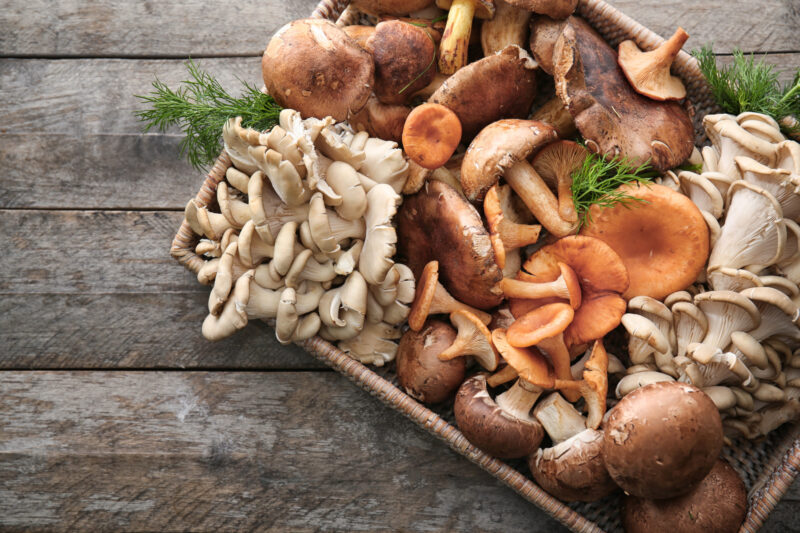
While most mushrooms should be cooked before consumption, there are a few species that are safe to eat raw in small quantities. These raw edible mushrooms offer unique flavors and textures that can be enjoyed in various culinary experiences. Here are some examples of mushrooms that are safe to eat raw:
- King Boletes: Highly sought after for their meaty texture and nutty flavor, King Boletes can be consumed raw in salads or thinly sliced for added crunch.
- Chanterelles: With their delicate and fruity taste, Chanterelles can be enjoyed raw in salads or used as a topping for bruschetta.
- Lion’s Mane: Known for its resemblance to a lion’s mane, this mushroom has a sweet and delicate flavor that is best preserved by consuming it raw in dishes like sushi or ceviche.
- Witches Butter: Despite its gelatinous texture, Witches Butter can be consumed raw in small amounts and is often used as a thickening agent in soups and sauces.
- Matsutake: A prized mushroom in Japanese cuisine, Matsutake can be enjoyed raw in thinly sliced form, adding its distinct aroma and flavor to dishes.
- Edible Amanita species: Certain varieties of Amanita mushrooms, such as Amanita caesarea, can be consumed raw after thorough cleaning. They have a mild taste and can be used in salads or as a decorative element in dishes.
- Truffles: Renowned for their earthy and aromatic profile, truffles are often shaved raw over dishes like pasta, risotto, or scrambled eggs to enhance their flavors.
- Morels: With their unique honeycomb-like appearance and earthy flavor, morels can be enjoyed raw in small amounts, sliced thinly and added to salads or used as a garnish.
It is important to note that even these mushrooms should be consumed in moderation and with caution. Some raw mushrooms may contain toxins or compounds that can be eliminated through cooking. It is recommended to research each specific mushroom species and ensure they are sourced from reliable and trustworthy suppliers before consuming them raw.
| Mushroom | Preparation | Flavor Profile | Uses |
|---|---|---|---|
| King Boletes | Raw in salads or thinly sliced | Meaty, nutty | Salads, soups, stir-fries |
| Chanterelles | Raw in salads or as a topping | Delicate, fruity | Bruschetta, pasta, risotto |
| Lion’s Mane | Raw in sushi or ceviche | Sweet, delicate | Sushi, ceviche, stir-fries |
| Witches Butter | Raw in small amounts or as thickening agent | Gelatinous | Soups, sauces, stews |
| Matsutake | Thinly sliced raw | Aromatic, distinct | Sushi, salads, rice dishes |
| Edible Amanita species | Raw after thorough cleaning | Mild | Salads, decorative element |
| Truffles | Shaved raw as a finishing touch | Earthy, aromatic | Pasta, risotto, eggs |
| Morels | Raw in small amounts, sliced thinly | Earthy | Salads, garnish, sauces |
Remember, when consuming any raw mushrooms, it is important to handle them with care and ensure they are properly cleaned before consumption to minimize the risk of any potential contamination or allergens.
Mushrooms That Should Not Be Eaten Raw
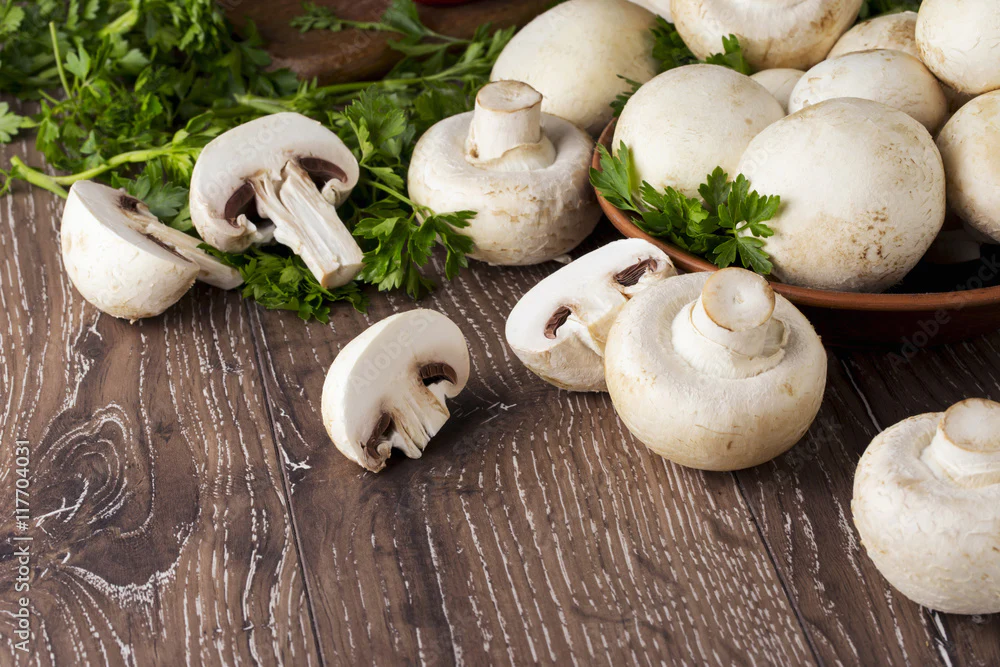
While there are a few raw edible mushrooms, it is important to note that many species should not be consumed raw. These mushrooms may cause gastrointestinal issues or contain mild toxins that can be harmful to our health. It is crucial to understand which mushrooms require cooking to ensure their safety for consumption.
Mushrooms Requiring Cooking
| Mushroom Species | Potential Risks |
|---|---|
| Chicken of the Woods | This mushroom can be tough and chewy in its raw state. Cooking helps enhance its texture and flavor. |
| Agaricus species (White Button Mushroom and Portobellos) | These commonly cultivated mushrooms should always be cooked before consumption to avoid any potential digestive discomfort. |
| Tough, Woody, or Rubbery Species | Inedible raw due to their texture. Cooking breaks down their tough cell walls, making them more palatable and easier to digest. |
| Honey Mushrooms | Consuming these mushrooms raw may cause stomach discomfort. Cooking removes any potential toxins and improves their flavor. |
These mushrooms should be thoroughly cooked to ensure their safety and to unlock the full potential of their flavors and nutritional benefits. While some may argue that the taste and texture of raw mushrooms are appealing, it is crucial to prioritize our health and well-being by properly cooking these varieties before consuming them.
Understanding which mushrooms require cooking is essential for avoiding any potential negative effects on our digestive systems. By properly cooking these mushrooms, we can enjoy their delicious flavors while minimizing any potential risks associated with consuming them raw.
Raw Mushrooms in Culinary Experiences
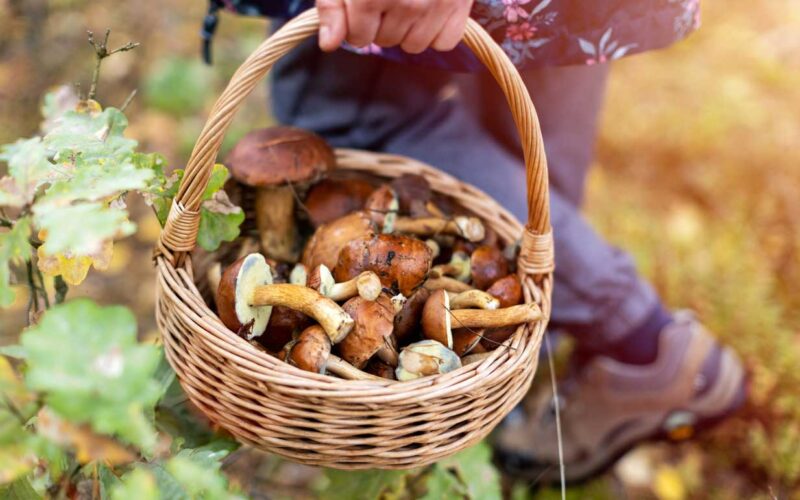
While the debate surrounding the safety and nutritional value of eating raw mushrooms continues, there are certain culinary experiences that showcase the unique flavors and textures of raw mushrooms. Although consuming raw mushrooms is more of a culinary adventure than a nutritional one, it can be a delightful addition to your gastronomic repertoire.
Raw mushrooms can be enjoyed in various ways, ranging from simple preparations to more elaborate dishes. One popular way to savor the delicate flavors of raw mushrooms is by incorporating them into salads. Thinly sliced raw mushrooms add a crisp and earthy element to salads, enhancing their overall taste and texture. They can be paired with fresh greens, herbs, and a light vinaigrette to create a refreshing and nutritious salad.
Another way to enjoy raw mushrooms is by marinating them. By soaking sliced mushrooms in a marinade of olive oil, lemon juice, herbs, and spices, you can infuse them with flavor and transform their texture. Marinated raw mushrooms can be used as a topping for bruschetta, added to wraps or sandwiches, or even enjoyed as a standalone appetizer.
Quote: “Raw mushrooms bring a unique and distinct taste to dishes, adding a refreshing crunch and earthy flavor. They can be a delightful addition to salads, sandwiches, and other culinary creations.” – Chef Emily
Raw Mushroom Carpaccio Recipe
| Ingredients | Instructions |
|---|---|
|
|
Storing and Handling Mushrooms
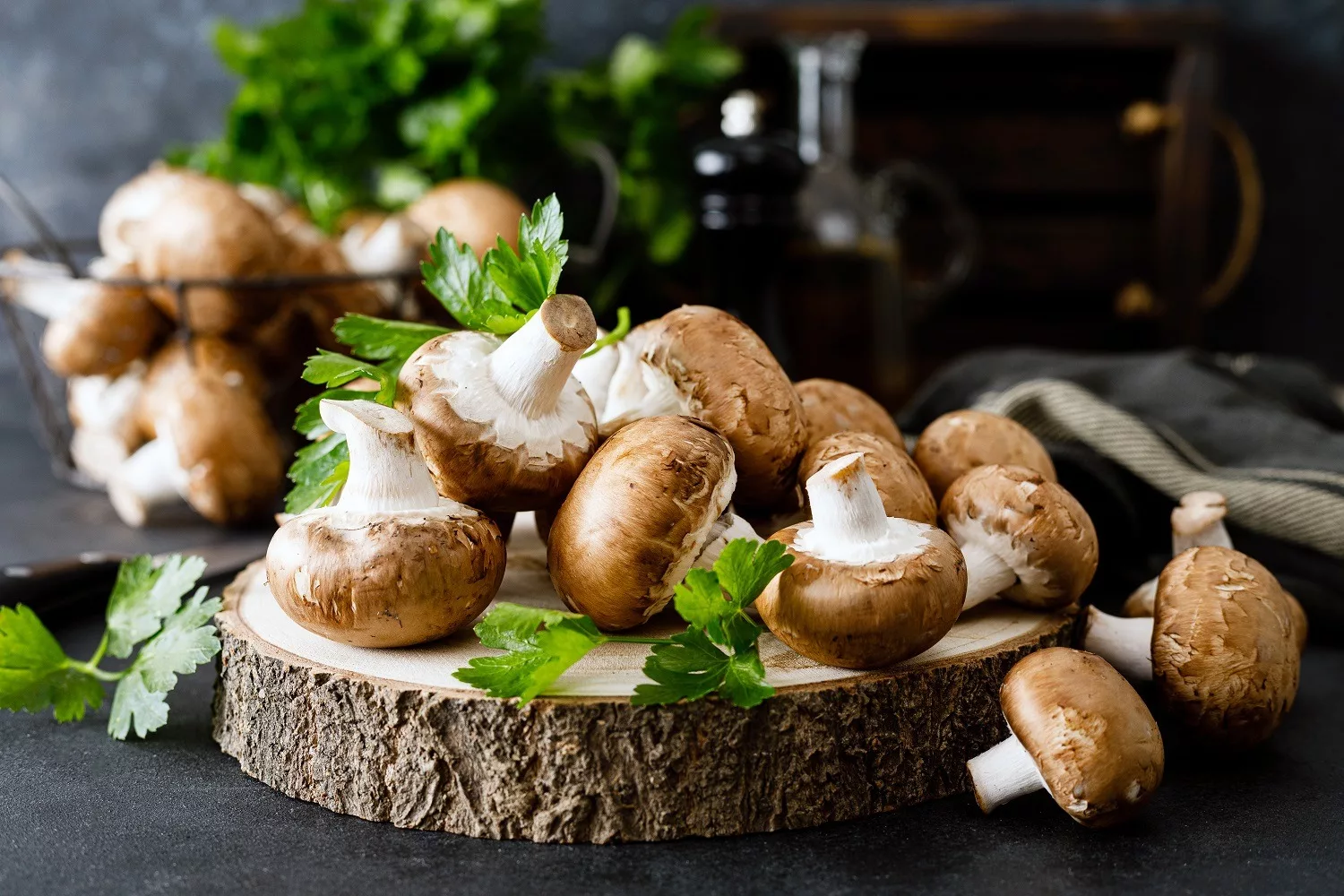
Properly storing and handling mushrooms is essential to maintain their freshness and quality. Here are some useful tips to ensure you make the most of your mushrooms:
- Storage: Fresh mushrooms can be stored in their original packaging or in a paper bag in the refrigerator. Avoid placing them in the crisper drawer or near strong-smelling foods, as mushrooms tend to absorb odors easily.
- Cleaning: To clean mushrooms, you can lightly wipe them with a damp paper cloth or towel. Avoid soaking them in water, as mushrooms are porous and can become waterlogged, affecting their texture and taste.
- Trimming: If there are any slimy or discolored parts, you can trim them off before cooking. However, it’s best to avoid peeling mushrooms, as much of their flavor and nutrients are concentrated in the skin.
- Handling: When handling mushrooms, it’s important to be gentle to prevent bruising or damaging them. You can use a mushroom brush or a clean, dry cloth to remove any dirt or debris.
Incorporating these practices into your mushroom preparation routine will help ensure that your mushrooms stay fresh and delicious for longer periods.
| Storage Method | Duration | Tips |
|---|---|---|
| Refrigerator (Original Packaging) | Up to 1 week | Avoid placing near strong-smelling foods |
| Paper Bag | Up to 1 week | Keeps mushrooms dry and prevents moisture buildup |
| Freezing | Up to 3 months | Blanch mushrooms before freezing for better texture |
“Properly storing and handling mushrooms can significantly extend their shelf life and preserve their flavor. It’s important to keep mushrooms in a cool, dry place and handle them gently to avoid damaging their delicate structure. By following these tips, you can enjoy fresh and delicious mushrooms for longer periods.”
Debunking Mushroom Myths
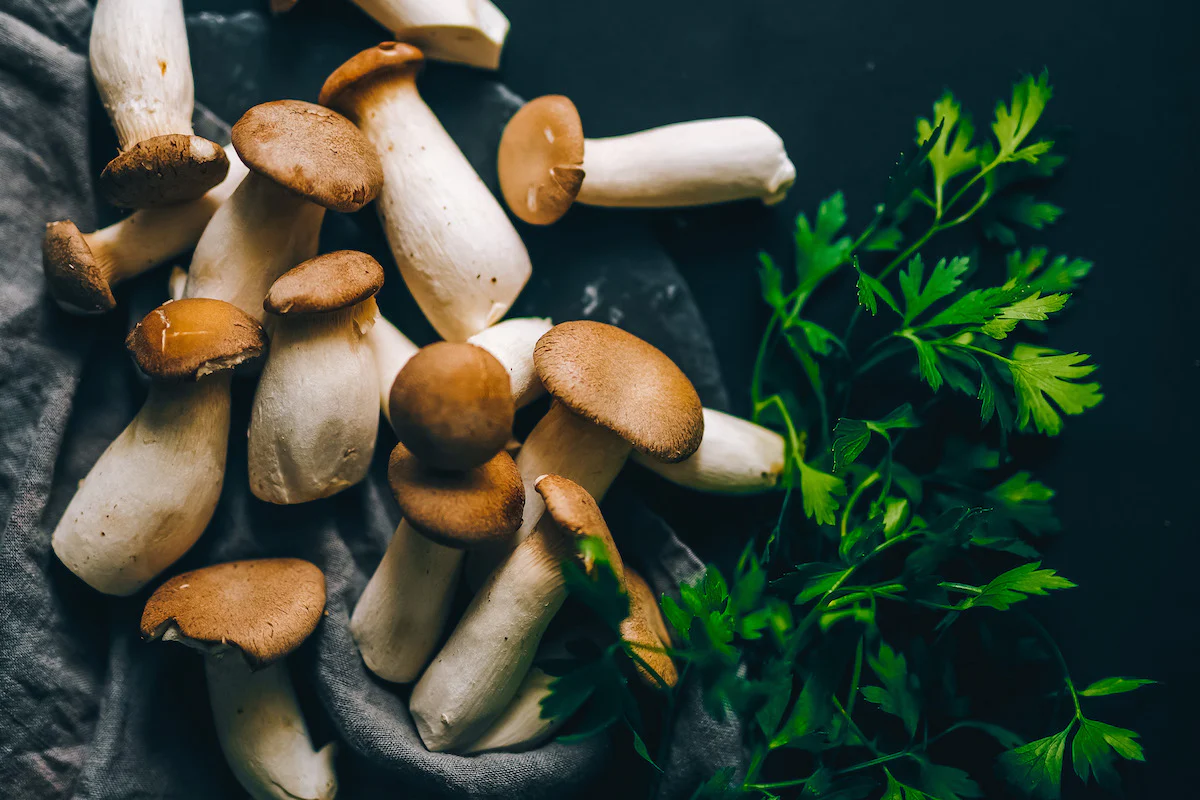
There are several myths surrounding mushrooms that need to be debunked. Let’s separate fact from fiction and uncover the truth about these fascinating fungi.
Myth 1: Mushrooms are difficult to store
Fact: Contrary to popular belief, storing mushrooms is quite simple. They can be easily stored in their original packaging or even frozen for later use. Just make sure to place them in a cool, dry area of your refrigerator to maintain their freshness. By following these guidelines, you can enjoy mushrooms whenever you want without worrying about their storage.
Myth 2: Mushrooms should not be washed
Fact: While it’s true that mushrooms absorb water easily, it is generally safe to lightly rinse them or wipe them with a wet paper cloth. This helps remove any dirt or debris that may be present. Just remember to dry them thoroughly before cooking to avoid any sogginess. So go ahead and give your mushrooms a gentle rinse to ensure they are clean and ready to be prepared.
Myth 3: Mushrooms are not suitable for children
Fact: Commercially purchased mushrooms are perfectly safe for children to consume and can even offer health benefits. Mushrooms are a rich source of vitamins, minerals, and antioxidants that support overall well-being. However, it’s essential to introduce mushrooms to children gradually and in age-appropriate serving sizes. By including mushrooms in their diet, you can provide them with a nutritious and delicious food option.
Myth 4: Mushrooms have no nutritional value
Fact: Mushrooms are nutritional powerhouses packed with essential nutrients. They are low in calories and fat, making them a healthy addition to any diet. Mushrooms contain vitamins such as B vitamins, vitamin D, and minerals like potassium and selenium. Incorporating mushrooms into your meals can help enhance their nutritional value and contribute to a well-balanced diet.
| Common Mushroom Myths | Facts |
|---|---|
| Mushrooms are difficult to store | Easily stored in their original packaging or frozen |
| Mushrooms should not be washed | Safe to lightly rinse or wipe with a wet paper cloth |
| Mushrooms are not suitable for children | Commercially purchased mushrooms are safe and beneficial for children |
| Mushrooms have no nutritional value | Mushrooms are packed with vitamins, minerals, and antioxidants |
Now that these myths have been debunked, you can confidently enjoy mushrooms knowing the truth behind these misconceptions. Remember to store them properly, clean them gently, and embrace their nutritional benefits. Mushrooms are not only versatile in the kitchen but also offer a unique and delicious addition to your meals.
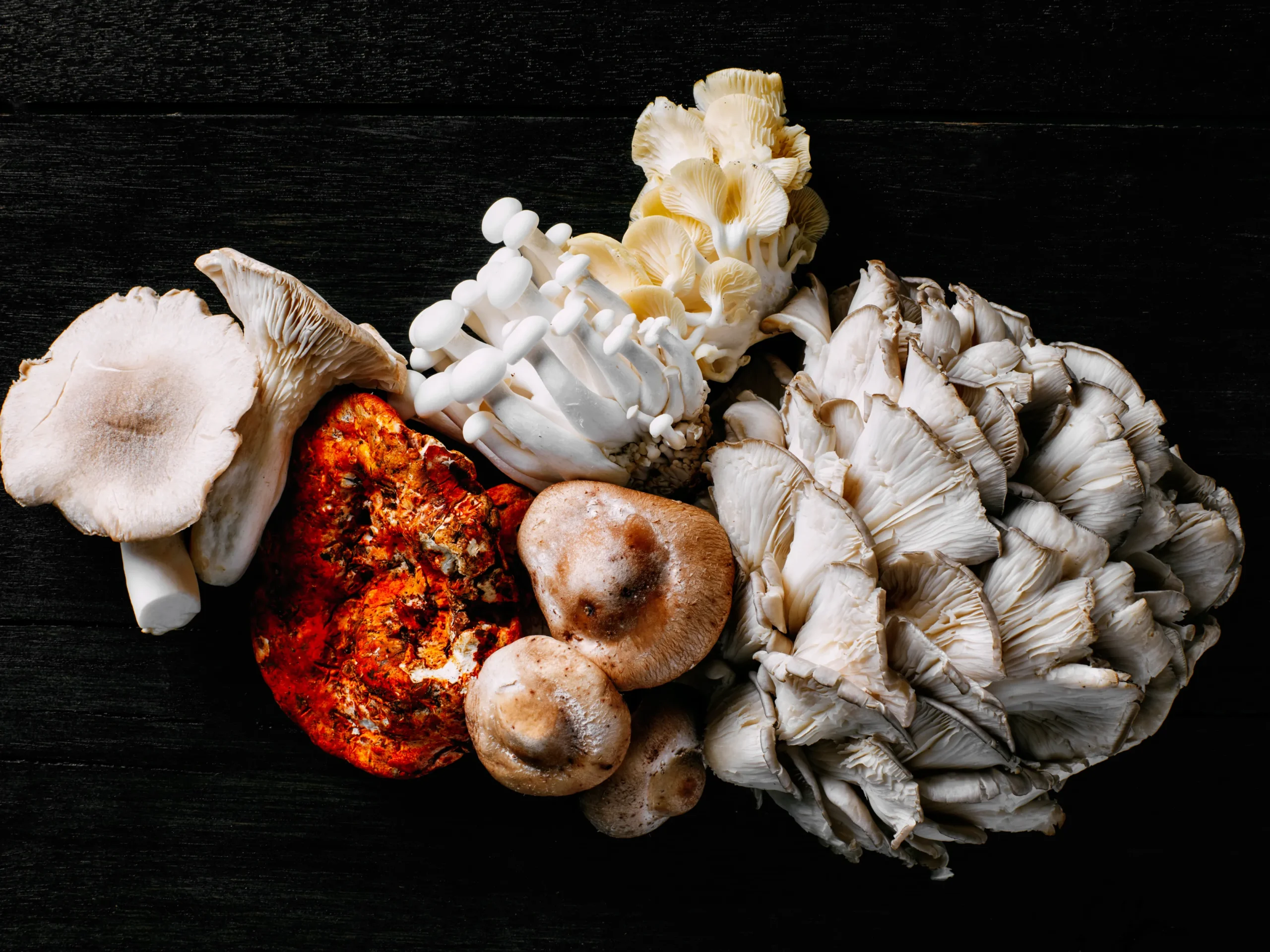
Conclusion
In conclusion, the question of whether you can eat mushrooms raw depends on the specific species. While most mushrooms should be cooked before consumption due to potential toxins and their tough cell walls, there are a few varieties that are safe to eat raw in small quantities.
It is important to consider the risks and benefits of consuming raw mushrooms and to handle them properly for storing and cleaning. Understanding the digestibility and nutritional value of raw mushrooms is essential in making informed decisions about incorporating them into your diet.
Ultimately, the choice of whether to eat mushrooms raw should be based on personal preference and individual health considerations. If you decide to consume raw mushrooms, it is important to do so in moderation and be aware of any potential allergic reactions or digestive issues.
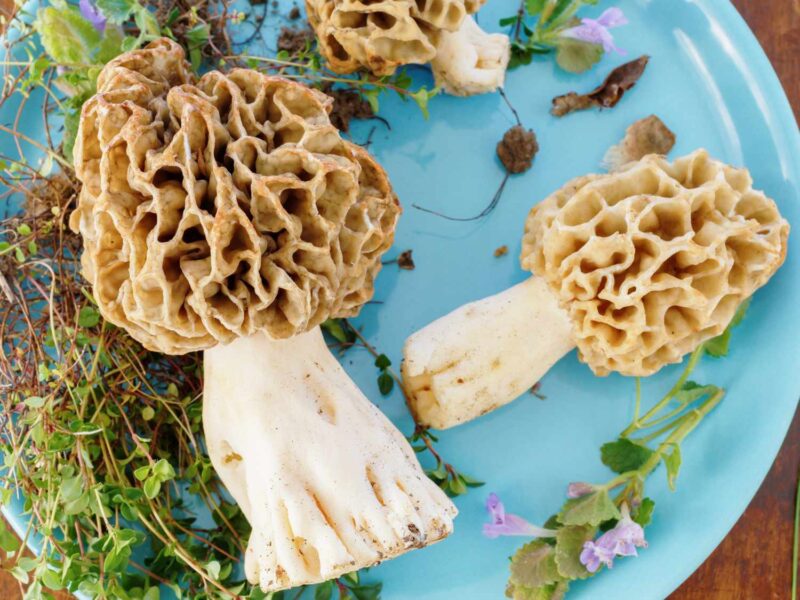
FAQ
Can all mushrooms be eaten raw?
No, most mushrooms should be cooked before eating. Cooking mushrooms makes their nutrients accessible and makes them easier to digest.
Why should mushrooms be cooked before consumption?
Cooking mushrooms breaks down their tough cell walls and makes them more digestible. It also helps release and activate their nutritional and medicinal components.
Are there any mushrooms that can be consumed raw?
Yes, there are a few mushroom species that are safe to eat raw in small quantities. These include King Boletes, Chanterelles, Lion’s Mane, Witches Butter, Matsutake, some edible Amanita species, Truffles, and Morels. However, it is important to research each specific species before consuming them raw.
Are there any mushrooms that should not be eaten raw?
Yes, some mushrooms, such as Chicken of the Woods, Agaricus species (White Button Mushroom and Portobellos), and certain tough, woody, or rubbery species, may cause gastrointestinal issues or contain mild toxins. Honey Mushrooms may also cause stomach discomfort when eaten raw. It is important to thoroughly cook these mushrooms to ensure their safety for consumption.
Can raw mushrooms be used in cooking?
Yes, raw mushrooms can be enjoyed in certain culinary dishes that highlight their delicate flavors and textures. Some traditional recipes in certain cultures include raw mushrooms. However, it is important to view consuming raw mushrooms as more of a culinary experience rather than a nutritional one.
How should mushrooms be stored and handled?
Fresh mushrooms can be stored in their original packaging in the refrigerator for up to one week. It is best to avoid placing them in the crisper or near fragrant foods. Cleaning mushrooms can be done with a wet paper cloth or towel, or by lightly rinsing them under cool water.
What are some common myths about mushrooms?
There are several myths about mushrooms that need to be debunked. It is not true that mushrooms are difficult to store or that they should never be washed. Additionally, commercially purchased mushrooms are safe for children and mushrooms do have nutritional value, containing vitamins, minerals, and even Vitamin D.

